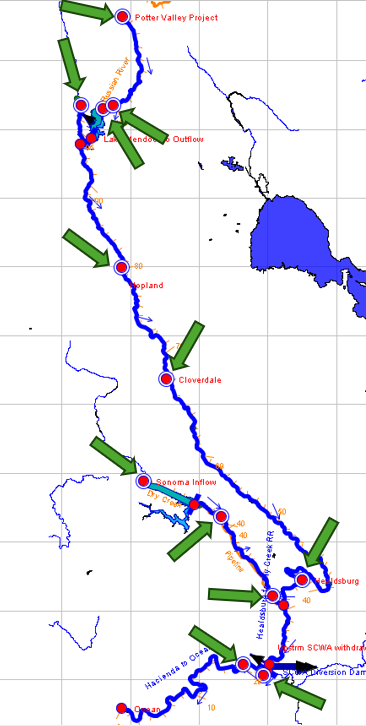Boundary conditions must be defined at every location where water enters the water quality modeling domain. This includes inflows within the HEC-ResSim network—which occur when the water quality domain is smaller than the full network—as well as local inflows entering at junctions. The figure below shows an example watershed with inflow locations highlighted.

Constituent concentrations at these boundaries can be assigned constant values or time-series data. An alternative approach is the ambient boundary condition option, where incoming water is assumed to have the same water quality as the existing reach or reservoir conditions, ensuring minimal impact on water quality. This method is particularly useful for handling balance flows assigned to reservoirs.
Balance flows are typically added to reservoir simulations to account for gains and losses at the surface (precipitation, evaporation), seepage, ungaged inflows, and/or inflow and outflow gaging inaccuracies. They rectify the gaged reservoir inflows and outflows with the actual water balance, and allow users to ensure that modeled reservoir elevations match observed in historical simulations. These flows can be positive or negative. Since their primary role is to adjust the reservoir volume, they should not significantly influence water quality.
When the ambient boundary condition option is selected for a reservoir inflow, the inflow volume is apportioned to the vertical layers, and water is added to each layer with using the layer's existing water quality. The allocation of flows is done in proportion to the layer volume; this ensures all layers expand or contract vertically the same distance and the shape of the vertical profile is unaffected.

Ambient boundary conditions may also be used on inflows to stream reaches. This is useful to address small local inflows of unknown water quality. Instead of having to approximate these water quality concentrations, this option assumes these flows do not impact overall stream water quality. The water is added using the most upstream reach cell's water quality.